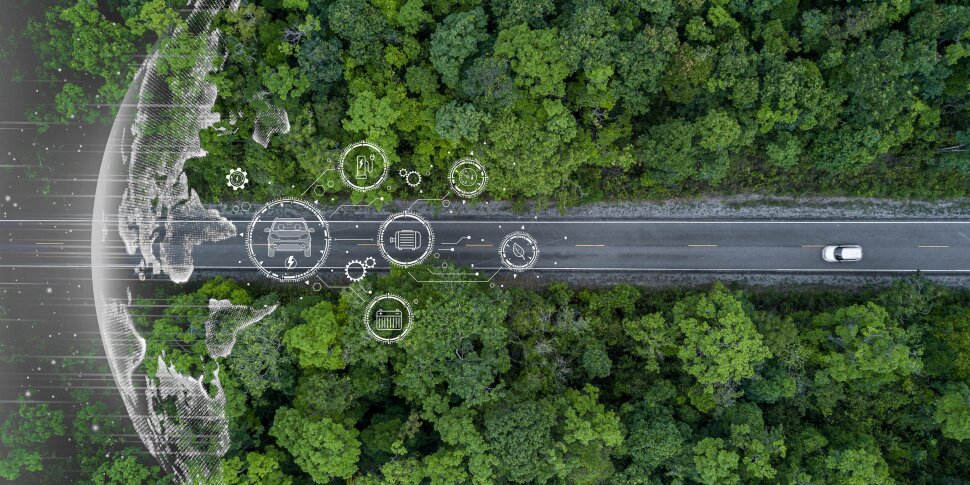From Emotion to Environmental Action: Influences on Tourists' Environmentally Responsible Behavior in Forest Parks
Downloads
Doi:10.28991/HEF-2025-06-01-012
Full Text:PDF
Downloads
Wu, K., Guo, Y., & Han, X. (2024). The relationship research between restorative perception, local attachment and environmental responsible behavior of urban park recreationists. Heliyon, 10(15), 35214. doi:10.1016/j.heliyon.2024.e35214.
Vu, A. D., Vo-Thanh, T., Nguyen, T. T. M., Bui, H. L., & Pham, T. N. (2024). Tourism social sustainability in remote communities in Vietnam: Tourists' behaviors and their drivers. Heliyon, 10(1), 23619. doi:10.1016/j.heliyon.2023.e23619.
Ye, W., Li, Z., & Xu, Y. (2022). Transmission of environmentally responsible behavior between tourist destination employees and tourists: The role of moral elevation and environmental knowledge. Frontiers in Psychology, 13, 1027736. doi:10.3389/fpsyg.2022.1027736.
Kollmuss, A., & Agyeman, J. (2002). Mind the Gap: Why do people act environmentally and what are the barriers to pro-environmental behavior? Environmental Education Research, 8(3), 239–260. doi:10.1080/13504620220145401.
Lee, K. (2011). The role of media exposure, social exposure and biospheric value orientation in the environmental attitude-intention-behavior model in adolescents. Journal of Environmental Psychology, 31(4), 301–308. doi:10.1016/j.jenvp.2011.08.004.
Homans, G. C. (1958). Social Behavior as Exchange. American Journal of Sociology, 63(6), 597–606. doi:10.1086/222355.
Erul, E., Uslu, A., Woosnam, K. M., Santos, J. A. C., Aleshinloye, K. D., & Ribeiro, M. A. (2024). Navigating the New Normal: The Role of Residents' Involvement and Support in Sustainable Tourism Recovery. Sustainability, 16(11), 4333. doi:10.3390/su16114333.
Bi, J., Wang, B., & Lu, F. (2024). Does Host-Guest Interaction Stimulate Tourists' Citizenship Behavior? A Combination of Social Exchange Theory and Cognitive Appraisal Theory. Forests, 15(7), 1156. doi:10.3390/f15071156.
Shen, H., Zheng, X., Lee, C., Jia, J., & Khattak, R. H. (2023). Tourists' Willingness to Pay for the Non-use Values of Ecotourism Resources in a National Forest Park. Journal of Resources and Ecology, 14(2), 331–343. doi:10.5814/j.issn.1674-764x.2023.02.011.
Zhou, B., Liu, T., Ryan, C., Wang, L. en, & Zhang, D. (2020). The satisfaction of tourists using bicycle sharing: a structural equation model - the case of Hangzhou, China. Journal of Sustainable Tourism, 28(7), 1063–1082. doi:10.1080/09669582.2020.1720697.
Wu, W., Liu, Y., Chin, T., & Zhu, W. (2018). Will green CSR enhance innovation? A perspective of public visibility and firm transparency. International Journal of Environmental Research and Public Health, 15(2), 268. doi:10.3390/ijerph15020268.
Shen, J., Wong, C. U. I., Zhang, H., Li, F., & Chen, J. (2025). The Intrinsic Experience of Tourism Autobiographical Memory on Environmentally Responsible Behavior: A Self-Expansion Perspective. Behavioral Sciences, 15(1), 2. doi:10.3390/bs15010002.
Cheng, T. M., C. Wu, H., & Huang, L. M. (2013). The influence of place attachment on the relationship between destination attractiveness and environmentally responsible behavior for island tourism in Penghu, Taiwan. Journal of Sustainable Tourism, 21(8), 1166–1187. doi:10.1080/09669582.2012.750329.
Xue, Y. J., Deng, T., & Mao, K. R. (2018). Influencing factors on the ecological protection behaviors of entrepreneurial farmers in Chinese forest zones. Sustainability (Switzerland), 10(6), 1827. doi:10.3390/su10061827.
Cheng, Z., & Chen, X. (2022). The Effect of Tourism Experience on Tourists' Environmentally Responsible Behavior at Cultural Heritage Sites: The Mediating Role of Cultural Attachment. Sustainability (Switzerland), 14(1), 565. doi:10.3390/su14010565.
Wang, S., Berbekova, A., Uysal, M., & Wang, J. (2024). Emotional Solidarity and Co-creation of Experience as Determinants of Environmentally Responsible Behavior: A Stimulus-Organism-Response Theory Perspective. Journal of Travel Research, 63(1), 115–135. doi:10.1177/00472875221146786.
Castellanos-Verdugo, M., Vega-Vázquez, M., Oviedo-García, M. í., & Orgaz-Agüera, F. (2016). The relevance of psychological factors in the ecotourist experience satisfaction through ecotourist site perceived value. Journal of Cleaner Production, 124, 226–235. doi:10.1016/j.jclepro.2016.02.126.
Jovanovič, S., Gatarič, D., Prnjat, Z., Andjelkovič, G., Jovanovič, J. M., Lukič, B., & Lutovac, M. D. (2016). Exploring proenvironmental behavior of serbian youth through environmental values, satisfaction, and responsibility. Social Behavior and Personality, 44(7), 1057–1068. doi:10.2224/sbp.2016.44.7.1057.
Tabernero, C., Cuadrado, E., Luque, B., Signoria, E., & Prota, R. (2016). The importance of achieving a high customer satisfaction with recycling services in communities. Environment, Development and Sustainability, 18(3), 763–776. doi:10.1007/s10668-015-9676-4.
Tian, Q., & Robertson, J. L. (2019). How and When Does Perceived CSR Affect Employees' Engagement in Voluntary Pro-environmental Behavior? Journal of Business Ethics, 155(2), 399–412. doi:10.1007/s10551-017-3497-3.
Li, D., Jiang, J., Zhang, L., Huang, C., & Wang, D. (2023). Do CEOs with Sent-Down Movement Experience Foster Corporate Environmental Responsibility? Journal of Business Ethics, 185(1), 147–168. doi:10.1007/s10551-022-05300-0.
Karatepe, O. M., Rezapouraghdam, H., Hassannia, R., Kim, T. T., & Enea, C. (2024). Tourism destination social responsibility and the moderating role of self-congruity. Tourism Review, 79(3), 568–584. doi:10.1108/TR-01-2023-0025.
Tasci, A. D. A., Uslu, A., Stylidis, D., & Woosnam, K. M. (2022). Place-Oriented or People-Oriented Concepts for Destination Loyalty: Destination Image and Place Attachment versus Perceived Distances and Emotional Solidarity. Journal of Travel Research, 61(2), 430–453. doi:10.1177/0047287520982377.
Wai, Y. S., Bojei, J., Osman, S., & Hashim, N. H. (2018). Perceived self-efficacy and its role in fostering pro-environmental attitude and behaviours. Asian Journal of Business and Accounting, 11(2), 151–186. doi:10.22452/ajba.vol11no2.5.
Blasi, F., & Sidenius, N. (2010). The urokinase receptor: Focused cell surface proteolysis, cell adhesion and signaling. FEBS Letters, 584(9), 1923–1930. doi:10.1016/j.febslet.2009.12.039.
Xie, X., & Wang, Z. (2024). The impact of place attachment on the environmentally responsible behavior of residents in National Park gateway communities and the mediating effect of environmental commitment: a case of China National Park. Frontiers in Psychology, 15, 15. doi:10.3389/fpsyg.2024.1386337.
Durkheim, É. (2019). From the Elementary forms of the Religious Life. Social Theory: A Reader, 16, 110–115.
Woosnam, K. M., Joo, D., Aleshinloye, K. D., & Denley, T. J. (2021). Emotional solidarity and destination loyalty amid the COVID-19 pandemic: a comparison of two scales. Journal of Travel and Tourism Marketing, 38(6), 541–553. doi:10.1080/10548408.2021.1969317.
Brown, G., & Raymond, C. (2007). The relationship between place attachment and landscape values: Toward mapping place attachment. Applied Geography, 27(2), 89–111. doi:10.1016/j.apgeog.2006.11.002.
Ramkissoon, H., Smith, L. D. G., & Weiler, B. (2013). Relationships between place attachment, place satisfaction and pro-environmental behaviour in an Australian national park. Journal of Sustainable Tourism, 21(3), 434–457. doi:10.1080/09669582.2012.708042.
Ge, Q., Yang, J., Tang, F., Wang, Y., He, Q., Chen, H., Ji, Q., Ding, F., Jiang, Y., & Wang, Y. (2022). The Effects of Place Attachment and Emotional Solidarity on Community Residents' Attitudes toward Glacier Tourism. Land, 11(11), 11. doi:10.3390/land11112065.
Pizam, A., Neumann, Y., & Reichel, A. (1978). Dimentions of tourist satisfaction with a destination area. Annals of Tourism Research, 5(3), 314–322. doi:10.1016/0160-7383(78)90115-9.
Farrington, T., Curran, R., Gori, K., O'Gorman, K. D., & Queenan, C. J. (2017). Corporate social responsibility: reviewed, rated, revised. International Journal of Contemporary Hospitality Management, 29(1), 30–47. doi:10.1108/IJCHM-05-2015-0236.
Lee, S., Park, H. (Jason), Kim, K. H., & Lee, C.-K. (2021). A moderator of destination social responsibility for tourists' pro-environmental behaviors in the VIP model. Journal of Destination Marketing & Management, 20, 100610. doi:10.1016/j.jdmm.2021.100610.
Li, Q., Li, X., Chen, W., Su, X., & Yu, R. (2023). Involvement, place attachment, and environmentally responsible behaviour connected with geographical indication products. Tourism Geographies, 25(1), 44–71. doi:10.1080/14616688.2020.1826569.
Hu, B., Tuou, Y., & Liu, J. (2019). How Does Destination Social Responsibility Impact Residents' Pro-Tourism Behaviors? The Mediating Role of Place Attachment. Sustainability, 11(12), 3373. doi:10.3390/su11123373.
Su, L., Tang, B., & Nawijn, J. (2023). How Destination Social Responsibility Shapes Resident Emotional Solidarity and Quality of Life: Moderating Roles of Disclosure Tone and Visual Messaging. Journal of Travel Research, 62(1), 105–120. doi:10.1177/00472875211056683.
Bandura, A. (1989). Human Agency in Social Cognitive Theory. American Psychologist, 44(9), 1175–1184. doi:10.1037/0003-066X.44.9.1175.
Wadhar, S. B., Shahani, R., Zhou, R., Siddiquei, A. N., Ye, Q., & Asmi, F. (2023). What Factors Will Influence Chinese International Traveling for Leisure in the Post-COVID-19 Era: Role of Health Priorities and Health-Related Information Literacy. Healthcare (Switzerland), 11(3), 315. doi:10.3390/healthcare11030315.
Erfanian, S., Maleknia, R., & Azizi, R. (2024). Environmental Responsibility in Urban Forests: A Cognitive Analysis of Visitors' Behavior. Forests, 15(10), 1773. doi:10.3390/f15101773.
Bandura, A., Freeman, W. H., & Lightsey, R. (1999). Self-Efficacy: The Exercise of Control. Journal of Cognitive Psychotherapy, 13(2), 158. doi:10.1891/0889-8391.13.2.158.
Tabernero, C., & Hernández, B. (2011). Self-efficacy and intrinsic motivation guiding environmental behavior. Environment and Behavior, 43(5), 658–675. doi:10.1177/0013916510379759.
Zhou, L., Zhao, J., & Wang, J. (2024). Place Attachment or Novel Experience? Enablers of Recreationists' Environmentally Responsible Behavior in Scenic Spots. SAGE Open, 14(2), 21582440241255745. doi:10.1177/21582440241255745.
Ramkissoon, H., Graham Smith, L. D., & Weiler, B. (2013). Testing the dimensionality of place attachment and its relationships with place satisfaction and pro-environmental behaviours: A structural equation modelling approach. Tourism Management, 36, 552–566. doi:10.1016/j.tourman.2012.09.003.
Woosnam, K. M., Dudensing, R. M., & Walker, J. R. (2015). How Does Emotional Solidarity Factor into Visitor Spending among Birders in the Lower Rio Grande Valley of Texas? Journal of Travel Research, 54(5), 645–658. doi:10.1177/0047287514522884.
Brown, S. W., Cowles, D. L., & Tuten, T. L. (1996). Service recovery: Its value and limitations as a retail strategy. International Journal of Service Industry Management, 7(5), 32–46. doi:10.1108/09564239610149948.
Su, L., Huang, S. (Sam), & Pearce, J. (2018). How does destination social responsibility contribute to environmentally responsible behaviour? A destination resident perspective. Journal of Business Research, 86, 179–189. doi:10.1016/j.jbusres.2018.02.011.
Huang, H. (2016). Media use, environmental beliefs, self-efficacy, and pro-environmental behavior. Journal of Business Research, 69(6), 2206–2212. doi:10.1016/j.jbusres.2015.12.031.
Legowo, M. B., Sorongan, F. A., Subanidja, S., Indiarto, B., & Prayitno, D. (2024). Leveraging Uniqueness and Local Wisdom for Sustainable Tourism Village Development through Technology Utilization. Journal of Human, Earth, and Future, 5(4), 603-613. doi:10.28991/HEF-2024-05-04-05.
Cheng, T. M., & Wu, H. C. (2015). How do environmental knowledge, environmental sensitivity, and place attachment affect environmentally responsible behavior? An integrated approach for sustainable island tourism. Journal of Sustainable Tourism, 23(4), 557–576. doi:10.1080/09669582.2014.965177.
Metwally, A. B. M., Ali, H. A. A., Aly, S. A. S., & Ali, M. A. S. (2024). The Interplay between Digital Technologies, Supply Chain Resilience, Robustness and Sustainable Environmental Performance: Does Supply Chain Complexity Matter? Sustainability (Switzerland), 16(14), 6175. doi:10.3390/su16146175.
Su, D. N., Nguyen, N. A. N., Nguyen, Q. N. T., & Tran, T. P. (2020). The link between travel motivation and satisfaction towards a heritage destination: The role of visitor engagement, visitor experience and heritage destination image. Tourism Management Perspectives, 34, 100634. doi:10.1016/j.tmp.2020.100634.
Hair, J., Black, W., Babin, B., & Anderson, R. (2010). Multivariate Data Analysis: A Global Perspective. Multivariate Data Analysis: A Global Perspective. Prentice-Hall, New Jersey, United States.
Hair, J. F., Risher, J. J., Sarstedt, M., & Ringle, C. M. (2019). When to use and how to report the results of PLS-SEM. European Business Review, 31(1), 2–24. doi:10.1108/EBR-11-2018-0203.
Bryne, B. (2010). Structural Equation Modeling with AMOS: Basic Concepts, Applications, and Programming. In Structural Equation Modeling. Routledge.
Curran, P. J., West, S. G., & Finch, J. F. (1996). The Robustness of Test Statistics to Nonnormality and Specification Error in Confirmatory Factor Analysis. Psychological Methods, 1(1), 16–29. doi:10.1037/1082-989X.1.1.16.
Mathai, A. M. (1970). Modern Factor Analysis. Canadian Mathematical Bulletin (Cambridge University Press), 13(2), 291–292. doi:10.1017/s0008439500031799.
Field, A. (2024). Discovering Statistics Using IBM SPSS Statistics. Sage Publications, New York, United States.
Hair Jr, J. F., Hult, G. T. M., Ringle, C. M., Sarstedt, M., Danks, N. P., & Ray, S. (2021). Partial least squares structural equation modeling (PLS-SEM) using R: A workbook. Springer Nature, Cham, Switzerland. doi:10.1007/978-3-030-80519-7.
Hu, L. T., & Bentler, P. M. (1999). Cutoff criteria for fit indexes in covariance structure analysis: Conventional criteria versus new alternatives. Structural Equation Modeling: a Multidisciplinary Journal, 6(1), 1-55. doi:10.1080/10705519909540118.
Chin, W. W. (1998). The partial least squares approach to structural equation modeling. Modern Methods for Business Research, 295(2), 295-336.
Fornell, C., & Larcker, D. F. (1981). Evaluating Structural Equation Models with Unobservable Variables and Measurement Error. Journal of Marketing Research, 18(1), 39–50. doi:10.1177/002224378101800104.
Henseler, J., Ringle, C. M., & Sarstedt, M. (2015). A new criterion for assessing discriminant validity in variance-based structural equation modeling. Journal of the Academy of Marketing Science, 43(1), 115–135. doi:10.1007/s11747-014-0403-8.
Torkzadeh, G., Koufteros, X., & Pflughoeft, K. (2003). Confirmatory analysis of computer self-efficacy. Structural Equation Modeling, 10(2), 263–275. doi:10.1207/S15328007SEM1002_6.
Edwards, J. R., & Lambert, L. S. (2007). Methods for integrating moderation and mediation: A general analytical framework using moderated path analysis. Psychological Methods, 12(1), 1–22. doi:10.1037/1082-989X.12.1.1.
Patwardhan, V., Ribeiro, M. A., Woosnam, K. M., Payini, V., & Mallya, J. (2020). Visitors' loyalty to religious tourism destinations: Considering place attachment, emotional experience and religious affiliation. Tourism Management Perspectives, 36, 100737. doi:10.1016/j.tmp.2020.100737.
Chow, A. S. Y., Ma, A. T. H., Wong, G. K. L., Lam, T. W. L., & Cheung, L. T. O. (2019). The impacts of place attachment on environmentally responsible behavioral intention and satisfaction of Chinese Nature-Based Tourists. Sustainability (Switzerland), 11(20), 5585. doi:10.3390/su11205585.
Kim, H. R., & Yoon, S. Y. (2020). How to help crowded destinations: Tourist anger vs. sympathy and role of destination social responsibility. Sustainability (Switzerland), 12(6), 2358. doi:10.3390/su12062358.
Ajzen, I. (1991). The theory of planned behavior. Organizational Behavior and Human Decision Processes, 50(2), 179–211. doi:10.1016/0749-5978(91)90020-T.
- The authors retain all copyrights. It is noticeable that authors will not be forced to sign any copyright transfer agreements.
- This work (including HTML and PDF Files) is licensed under a Creative Commons Attribution 4.0 International License.















